Whilst on holiday in Northern Italy this August, I had the pleasure of visiting our Franciacorta producer, Corteaura.
We were treated to a in-depth guided tour by Federico, the estate owner, who explained how he had jumped ship from the accounting world to immerse himself in the world of sparkling wine. A decision that has proved a great testament to him, as I can vouch for his product’s excellence.
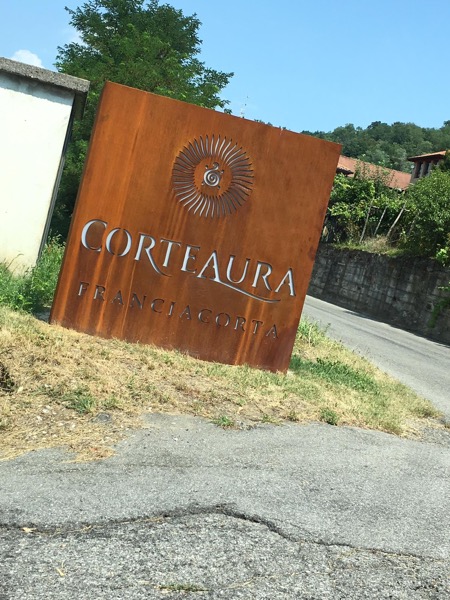
Franciacorta DOCG (“Denominazione di Origine Controllata e Garantita” – the highest quality classification Italian wines can be awarded) is a dry Italian sparkling wine which is made in the same way and from most of the same grapes found in Champagne.
Franciacorta is a much drier style than Prosecco, and is grown to the west of Lake Garda, in the Lombardy region. Both Prosecco and Franciacorta undertake secondary fermentation, the difference is Franciacorta is in bottle, similar to champagne, whilst prosecco is in a stainless steel tank.
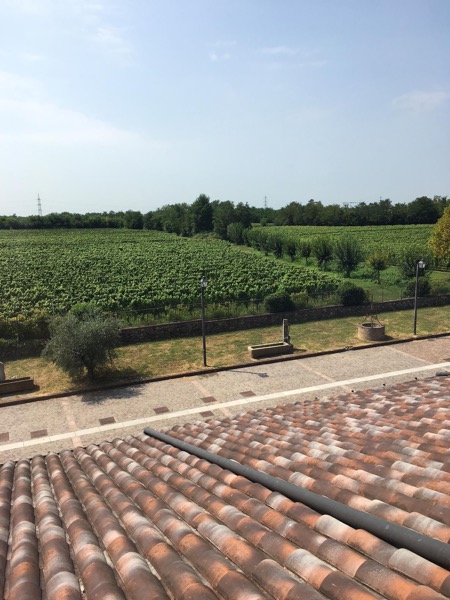
A view of the growing vines at Corteaura
Whilst touring the estate, Federico explained the process undertaken in developing a successful Franciacorta. He explained that for the Brut, the wine maker, Pierangelo Bonomi, aged the wine on the lees for a minimum of 24 months, which contributes to the pastry aromas on the palate. The Saten Millesemato is aged for 8 months in stainless steel tanks, followed by a minimum of 55 months further bottle ageing.
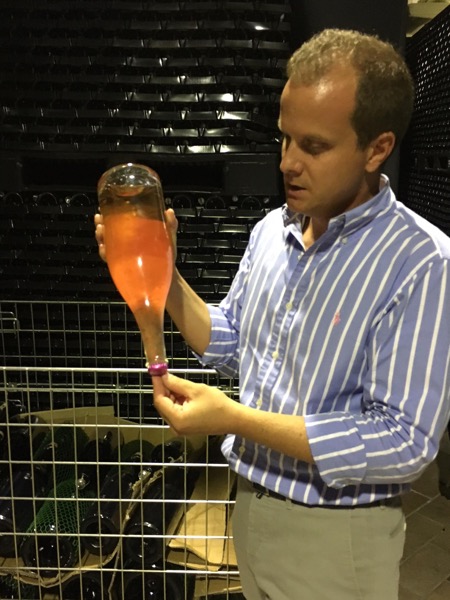
Federico explains how the wine is bottle fermented, and how the yeast slowly collects in the bottle neck before it’s released.
After our detailed tour, Pierangelo and Federico’s mother lead us in a tasting of the Corteaura range, accompanied with some delicious parmigiano and charcuterie platters.
We started with the rosato which is a blend of 75% Pinot Noir and 25% Chardonnay. Sparkling rosé is often used as the classic apéritif, and certainly whetted our appetite.
We also sampled the Saten Millesimato, the Insé Pas Dóse and the Demi-Sec.
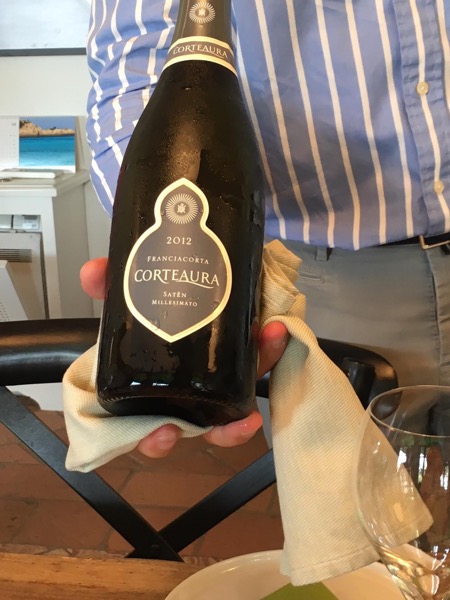
The 2012 Saten Millesimato, which is a 100% Chardonnay, was a big hit as part of our post tour tasting
The Insé, which is a blend of 65% Chardonnay and 35% Pinot Nero, really stopped us in our tracks. From the way the Corteaura family described it, this wine stood out as somewhat of a celebrity amongst the range. Insé means ‘by itself’ in Italian, as nothing is added to take away the originality of this wine. It demonstrates the classic qualities of a Pas Dóse, which is a sparkling wine with no added sugar. The ideal food pairing for the Insé is shellfish or other salt or fresh water fish. It also sits well with charcuterie dishes as we discovered first hand at the estate.
The name Corteaura derives from Greek Mythology and the symbol of the tortoise. A calm and long living animal that echoes the philosophy of these wines and the people who develop them.
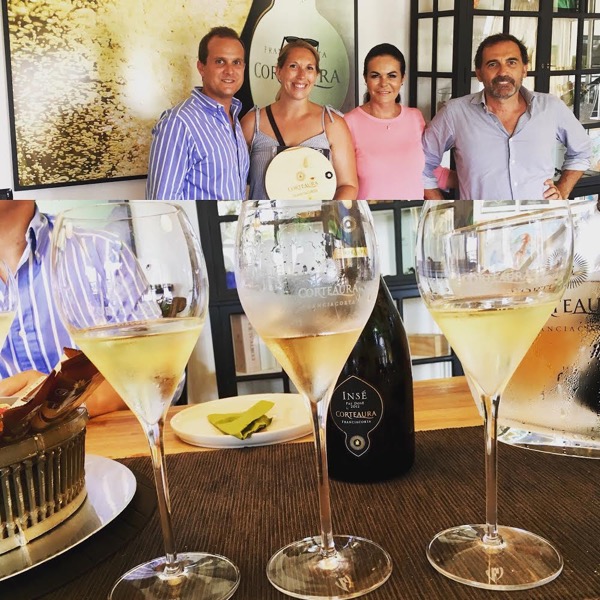
We were made very welcome by the whole team, and trying the Insé was certainly a highlight for me.
After the generous tasting and light bite selection, we bid a fond farewell to our Franciacorta family. The market for Franciacorta is certainly increasing in the UK, and at Lea and Sandeman, I explained to Federico and Pierangelo how exciting it is to promote their range of bubbles. Our customers are always keen to try new and different sparkling wines, so adding Corteaura to our range of Italian wines has proved exciting.
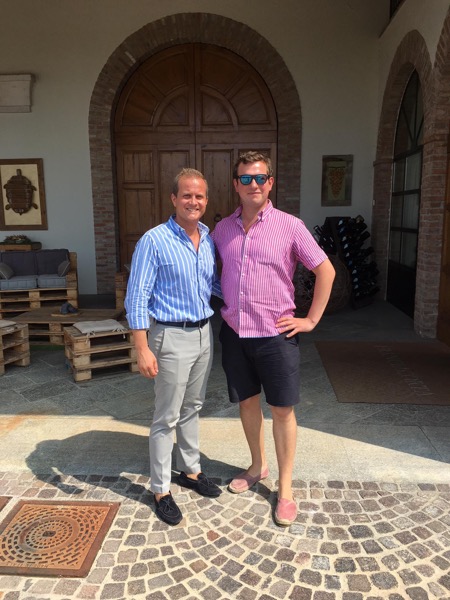
With Federico Fossini, Corteaura’s estate owner
